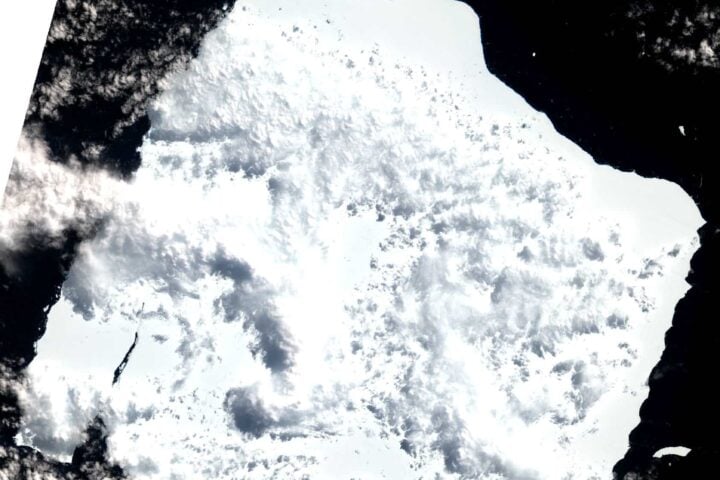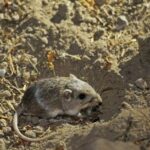Recently, researchers at the Globe Institute of the University of Copenhagen have discovered how natural hazards pose a threat to multiple endangered species.
A total of 3,722 endangered species with small populations and less distribution are in peril. Half of which are at high risk of extinction due to inhabiting tropical islands prone to natural disasters. According to the study, the global distribution includes 834 reptiles, 617 amphibians, 302 birds, and 248 mammals. The majority of them are concentrated around the Caribbean Sea and the Northwestern Pacific Ocean, posing a high risk of extinction due to consecutively occurring disasters, as per the PNAS Report Data.
Anolis Monteverde, Volcan Tajumulco Bromeliad Salamander, and Akiapolaau are some of the critically reserved or endangered species among them, according to the IUCN Red List.
Asia-Pacific is considered the most disaster-prone region worldwide. According to CNN, the annual floods in Northeast India’s Brahmaputra River affected nearly half a million people in 2023. As per the Council on foreign relation’s report, the Caribbean could soon become uninhabitable due to increasingly frequent natural disasters. Sometimes damages even exceed the size of the economies. Dominica, for example, suffered damages amounting to 226% of GDP after Hurricane Maria. Animals in particular, become more vulnerable in such situations. Still, only a handful of organizations like the International Fund of Animal Welfare and the Wildlife Disaster Network are working to aid these suffering wild animals.
The Karmactive reached out to Fernando Gonçalves, one of the two first authors behind the study, to know more about the sustainability strategies and ways to mitigate the risks on endangered species, and also, that could be beneficial in a long run. Fernando shared his insights favoring the use of modern techniques like satellite imagery and unmanned aerial vehicles (UAVs) or drones for monitoring those areas that are difficult to reach, providing critical data on species and assessing the impacts of natural hazards in near real-time. He told Karmactive, “Techniques such as gene editing and genetic rescue can help enhance the resilience of endangered species to environmental stresses, including those induced by natural hazards.” He suggested the engagement of local communities in conservation practices and the establishment of protected areas strategically located to minimize the impact of natural hazards on endangered species. He emphasized the importance of habitat restoration projects and the creation of insurance populations in safer areas. “Creating insurance populations in less vulnerable areas ensures the survival of species in the event of catastrophic natural events,” Fernando explained.
“We’re not just losing one species; we’re losing many ecosystem functions that these species provide,” Fernando Gonçalves reiterated. He underscored the urgency of moving species to safer areas for conservation and establishing captive breeding programs to boost their populations. These strategies are essential not only for helping species withstand natural hazards but also for preserving the intricate ecosystem functions they support.
The Caribbean and Asia-Pacific region seem to have learned from their past experiences with natural disasters. Currently, India, Dominica, and Haiti, like many other countries worldwide, are working to restore wetlands and mangrove forests, while investing in forecasting and building disaster-resistant infrastructure to mitigate the impact of natural disasters in the future (IMF).
Below are the complete answers by Fernando Gonçalves to Karmactive’s questions:
- How can communities more effectively utilize data on natural hazards to protect endangered species?
- Answer: Communities can more effectively utilize data on natural hazards to protect endangered species by implementing several key strategies. Initially, by taking account of the map we developed, conservation efforts should then focus on the most vulnerable species and habitats identified through these risk maps, with resources allocated towards intensive population management both in situ (within natural habitats) and ex situ (e.g., in zoos or botanical gardens). Engaging local communities in conservation efforts is also crucial. This can be achieved by raising awareness about the impacts of natural hazards on biodiversity and providing training on how to respond to natural hazards in ways that protect local wildlife and also how to help wildlife after the natural hazards. Advocacy for policies that incorporate natural hazard risk assessments into land-use planning and conservation strategies is essential, as is working with governments to create and enforce protective legislation for high-risk species and habitats. Implementing habitat restoration projects in areas prone to natural hazards can enhance ecosystem resilience. Establishing protected areas strategically located to minimize the impact of natural hazards on endangered species is another effective measure. Creating insurance populations (backup populations) in less vulnerable areas ensures the survival of species in the event of catastrophic natural events.
- What are the primary benefits of understanding the link between natural hazards and species vulnerability for conservation efforts?
- Answer: Understanding the link between natural hazards and species vulnerability improves conservation efforts by enabling precise resource allocation, tailored interventions, proactive measures such as habitat reinforcement, enhanced emergency preparedness, ecosystem resilience promotion, genetic diversity maintenance, accurate risk assessments, focused monitoring programs, stakeholder collaboration, future impact projections under varying climate scenarios, adaptation strategy development, global conservation prioritization, and increased funding and support for high-risk species and habitats. Conservationists can create more robust and adaptive strategies that not only address immediate threats but also contribute to the long-term preservation of biodiversity.
- What challenges do researchers face in mapping and predicting the impact of natural hazards on biodiversity?
- Answer: There is often a lack of comprehensive and high-resolution data on species distributions, population sizes, and habitat requirements. Historical data on natural hazards may be sparse or incomplete, making it difficult to establish long-term trends and impacts. Natural hazards interact with other threats like climate change, habitat destruction, and pollution, complicating the prediction of their impacts. Different species may respond differently to the same hazard, making it challenging to generalize findings. Predicting the timing and frequency of natural hazards is inherently uncertain, affecting the accuracy of impact assessments. Securing adequate funding for comprehensive, long-term studies can be difficult, especially for interdisciplinary and multi-regional projects. Translating scientific findings into actionable policies and conservation strategies is often hindered by regulatory and policy gaps.
- Are there any new technologies or methodologies being developed to mitigate these risks to endangered species?
- Answer: Modern satellites provide high-resolution imagery that can be used to monitor habitats, track changes, and assess the impact of natural hazards in near real-time. Unmanned aerial vehicles (UAVs) or drones are increasingly used for detailed surveys of hard-to-reach areas, providing critical data on species and habitat conditions. Techniques such as gene editing (e.g., CRISPR) and genetic rescue can help enhance the resilience of endangered species to environmental stresses, including those induced by natural hazards. Studying the genetic diversity and structure of populations can provide insights into their vulnerability and adaptive capacity, informing conservation strategies. Combining climate models with ecological and hazard models helps predict how changes in climate may influence the frequency and severity of natural hazards and their impacts on species. Developing and analyzing different scenarios allows researchers to assess potential future conditions and plan adaptive conservation measures accordingly. Apps designed for citizen scientists can facilitate real-time reporting of sightings, habitat conditions, and hazard impacts, enriching the data available for analysis. Implementing nature-based solutions such as restoring wetlands, mangroves, and forests can mitigate the impact of natural hazards like floods and storms while providing habitat for endangered species. Designing and establishing wildlife corridors that allow species to move between habitats safely can help populations recover from local disasters. Techniques such as in vitro fertilization and cloning can help increase population numbers for critically endangered species.
Similar Posts
- What lessons have been learned from past incidents where natural hazards have led to significant biodiversity loss?
- Answer: Protecting and preserving critical habitats, particularly those that serve as refuges during disasters, is crucial for the survival of species. Post-disaster restoration efforts can help reestablish damaged ecosystems and enhance their resilience to future hazards. Mapping biodiversity hotspots and understanding which areas are most susceptible to natural hazards helps prioritize conservation efforts. Endemic species, which are often more vulnerable due to limited ranges, should be a priority in conservation planning. Continuous monitoring and assessment allow for the timely identification of emerging threats and the effectiveness of conservation actions. Incorporating traditional and local knowledge into conservation planning can provide valuable insights into managing natural hazards and protecting biodiversity. Engaging local communities in conservation efforts fosters stewardship and ensures that interventions are culturally and contextually appropriate. Effective conservation in the face of natural hazards requires collaboration across disciplines, including ecology, geology, meteorology, and social sciences. Involving a wide range of stakeholders, from government agencies to NGOs and local communities, enhances the effectiveness and sustainability of conservation efforts. Leveraging Technology: Using advanced technologies like remote sensing, GIS, and machine learning improves the accuracy of risk assessments and the efficiency of response actions. Facilitating data sharing among researchers, conservationists, and policymakers enhances the collective understanding and management of biodiversity risks. Maintaining ex situ populations, such as in zoos and botanical gardens, provides a safety net for species that are highly vulnerable to natural disasters. Ensuring genetic diversity within ex situ populations helps maintain the potential for future reintroduction and restoration efforts. Ensuring the enforcement of policies and regulations aimed at protecting habitats and species from natural hazards is critical for long-term conservation success.


















